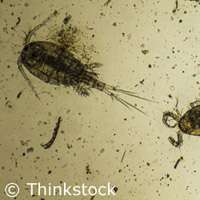New ways of cultivating valuable marine microorganisms

A four-year EU-funded project has identified new ways of cultivating marine microorganisms and screening them for potentially useful marine bio-compounds. This could have implications for the healthcare, cosmetics and pharmaceutical industries, which are just a few of the sectors that are eager to take advantage of value-added molecules derived from the sea.
Furthermore, a 'survival box' containing everything needed for collecting cyanobacteria - a marine organism that obtains energy through photosynthesis - has been developed. 'I hope to use this during expeditions to the Red Sea in May and to the tropical Atlantic Ocean on the research vessel Pelagia in September,' said MaCuMBA project coordinator Professor Lucas Stal.
While marine microorganisms - such as bacteria, fungi, sponges and algae - are an untapped resource of biotechnological potential, farming these molecules in a sustainable and efficient manner has proved to be costly and difficult. As a result, the vast majority of marine microorganisms have not been cultivated, meaning that potentially valuable marine bio-compounds remain underexploited.
The MaCuMBA (Marine Microorganisms: Cultivation Methods for Improving their Biotechnological Applications) project, which runs until July 2016, has sought to address this by identifying new ways of cultivating and increasing the growth efficiency of marine microorganisms in both conventional and extreme habitats. A number of new approaches have been trialled, including the co-cultivation of interdependent microorganisms, which help each other to thrive, and the mimicking of natural environments. The project has also applied new automated techniques to improve the efficiency of isolating promising microorganisms.
Another interesting feature of this project has been the focus on cell-to-cell communication. Cells use signalling molecules to coordinate their actions, and it is thought that these molecules could play an important role in stimulating growth of the same or even other species.
From the beginning, the project has focused on two main oceanic areas. The first is the photic zone, which is the depth of water in an ocean exposed to sufficient sunlight for photosynthesis to occur. Here, highly diverse microbial communities proliferate. The second zone encompasses deep extreme ecosystems, where it is thought that due to severe environmental conditions, many new molecules and enzymes with unusual properties will be discovered.
Indeed, by the end of the project, the team hopes to have succeeded in isolating numerous novel marine bacteria and improved the cultivation efficiency of useful marine microorganisms. MaCuMBA also aims to achieve a better understanding of exactly how cell-to-cell communication works, as well as how bioactive molecules from already cultured organisms are produced.
All strains of microorganisms collected as part of the MaCuMBA project will be made available online as soon as possible. Algae and cyanobacteria will be stored in the Roscoff Culture Collection (RCC), France, while all other organisms will be kept in the Leibniz-Institut Deutsche Sammlung von Mikroorganismen und Zellkulturen GmbH (German Collection of Microorganisms and Cell Cultures (DSMZ)).
More information: www.macumbaproject.eu/
Provided by CORDIS



















